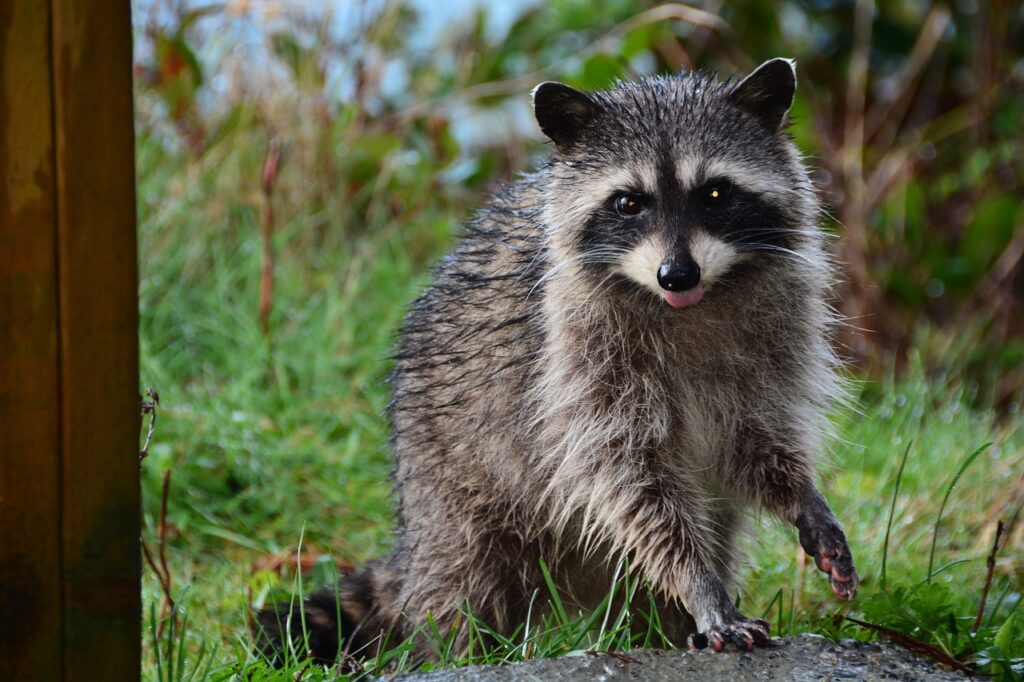The raccoon possesses exceptional hand coordination, night vision, and dexterity. Insulation from their deep coated fur makes adaption to cold and less inhabitable environments much easier. Setting up shop in a persons homes attic is an overly secure hide out for a raccoon. Thru treacherous landscapes they may stumble into a more favorable and easy to live environment.
Their successful habitation functions in the darkness of an attic or home space can be significantly reduced by minimizing the materials they seek. Easily accessible food products are the biggest draw to a raccoon alongside a well hidden dark spot where they can go unnoticed.
Their opportunistic appetites enjoy many food sources including insects and rodents, fruits and berries, even frogs have become prey to the curious night critters. A well stocked placement of food supply among human settlement eliminates the work culture of the raccoon, making a pampered and overly ideal apparatus for them to settle into and possibly flourish.
Wildlife removal should be handled as a cautious task.
A wild raccoon carries risk of rabies, and the risk of attack towards pets and people is one to be acknowledged when attempting to handle these wild animals. Their supreme territory adaptation and exploration may lead them to the grounds of man made and occupied structures, where their finger savvy techniques make fooling around with property one of a nuisance.
Humane raccoon removal can be a accomplished by eliminating the source of attraction.
Food, shelter, and water are the top priorities of a raccoon, and in order to guarantee a property raccoon free in the long run is to make sure their is no direct, easily accessible appeal. The mother raccoon seeks safe and dry shelter to have her babies, finding a possible litter of baby raccoon’s should be top priority when attempting to remove a raccoon influx. Entries like holes in wall, tears in material like netting, and windows should be assessed, then immediately sealed.
Trash cans should be strapped closed, as the raccoon is a curious and strong animal looking to fiddle with many things in and around a property. Fences may not block a raccoon, they are highly productive and can dig under a fence, or climb over it with skill and agility. The trees around a fence may aid a raccoon in breaching the perimeters. Trimming long branches around a fence may help make the targets they seek harder to obtain.
Raccoon’s can run 15 mph, and they avoid human contact as much as possible.
Attractive nesting spots for a raccoon in a home include dark and isolated spots like the den and chimney, inside of walls, under porches and crawlspaces. If the problem persists, contact local animal removal services.

